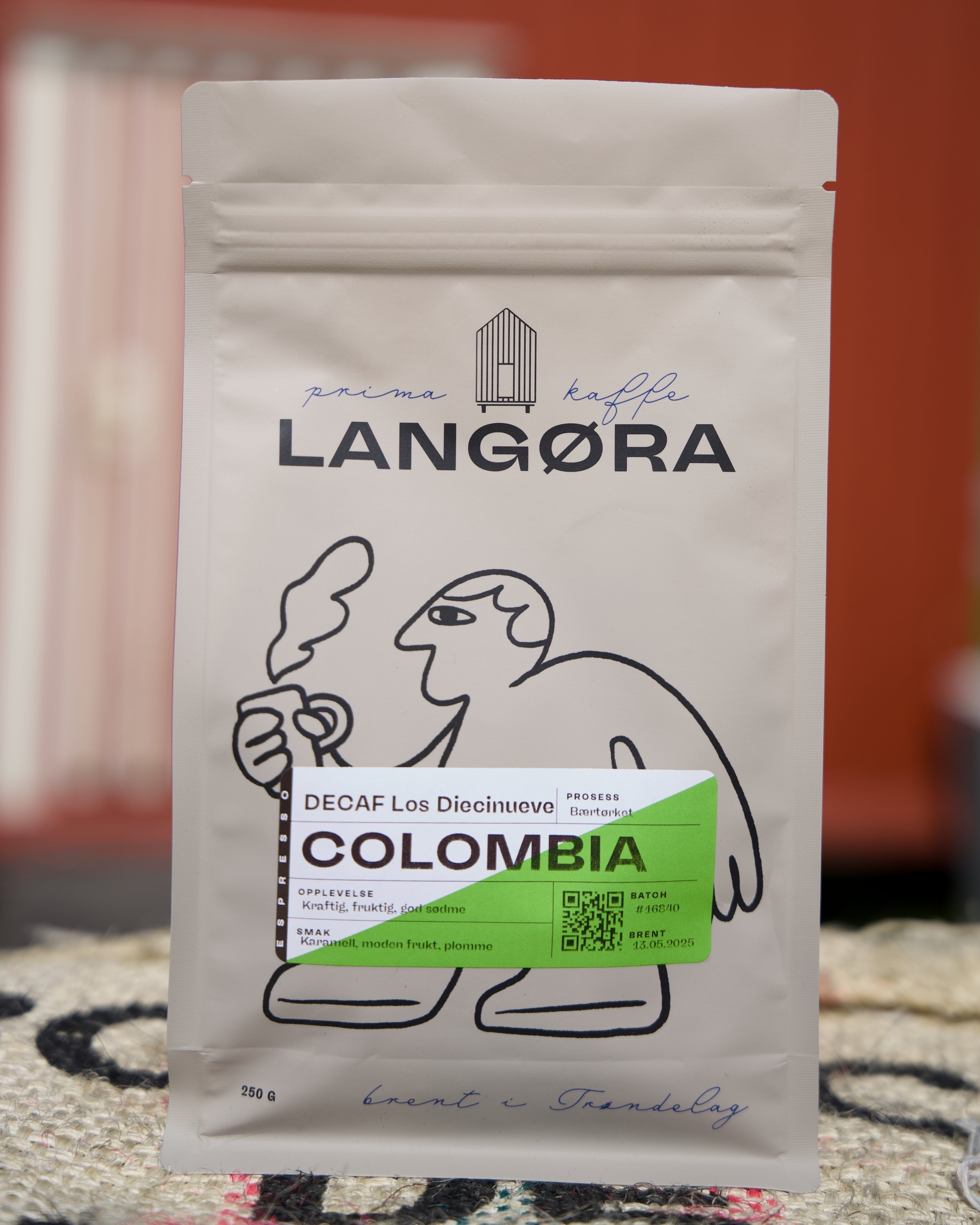Luke 13
THE COAST COFFEE
I’m Oleksii, the brains behind The Coast Coffee, a boutique coffee roastery nestled on the enchanting island of Lovund in the Norwegian Sea. Picture this – a quaint spot in Helgeland, Norway, where the sea breeze carries whispers of adventure, and each roasted bean tells a story of passion and precision.
It all began with an insatiable love for coffee; its narrative, its myriad of flavors, and its unparalleled ability to create connections. For me, there's no greater thrill than hunting down exceptional beans, mastering the art of roasting and brewing, and sharing that perfect cup with fellow enthusiasts. The idea took root in 2017 when I transplanted my coffee journey from Ukraine to the breathtaking landscapes of Northern Norway.
Get the coffee here: https://www.thecoastcoffee.com/shop
Instagram: @thecoastcoffee
Jesus Barahona
COUNTRY: Colombia
FARM/COOP/STATION: Finca Quindio
VARIETIES: Tabi
PROCESSING: Natural
ALTITUDE: 1,800 meters above sea level
OWNER: Jesus & Rosa Barahona
SUBREGION/TOWN: Algeciras
REGION: Huila
FARM SIZE: 7 hectares
HARVEST MONTHS: Year-round, depending on the region
FLAVOUR PROFILE: Dark chocolate, prune, rich and raisiny, brandy, purple berries.
ABOUT THE PRODUCERS
Husband and wife duo Jesus and Rosa Barahona have been cultivating coffee at Finca Quindio for more than 20 years. When they first purchased the land, a portion of the farm was used to graze cattle and another portion had Caturra planted on it. Today, they cultivate Geisha, Castillo, Caturra and other varieties on their 7 hectares with an eye towards specialty production.
To continue improving their coffee quality, Jesus and Rosa plan to plant Pink Bourbon and Geisha variety plants.
HARVEST
Jesus and Rosa selectively handpick ripe, red cherry and process it on their farm. They lay cherry on marquesinas to sundry. They rake cherry frequently to ensure even drying.
ABOUT TABI
Tabi is a cross between Typica, Bourbon and Timor that was created by CENICAFE. It was released in 2002 and combines coffee leaf rust resistance with the good cup quality of Bourbon and Typica. Similar to those two parents, Tabi is tall with long branches. However, Tabi has slightly larger fruits and seeds and can be grown at high altitudes, and in high density, with up to 3,000 trees per hectare. The name comes from the word “tabi,” meaning “good” in Guambiano, the dialect of a native Colombian tribe.
EXPORT
This lot was exported with the support of Cuatro Vientos, a family-owned exporter in Huila, Colombia. Founded in 2018 by Julian and Yonatan Gonzalez. Cuatro Vientos operates three purchasing points and two warehouses, providing vital services such as drying, storing, and grading coffee. Their focus on specialty processing ensures high-quality coffee year-round. They also offer financing through Bancolombia and provide financial education, ensuring long-term profitability and success for over 30 specialty-focused farms.
COFFEE IN COLOMBIA
Although coffee production in Colombia did not become a large commercial industry until the 19th century, it is likely that coffee was introduced to Colombia about a century earlier by Jesuit priests.
Once commercial production started, it spread quickly. The first commercial coffee plantations were established in the northeast, near the border with Venezuela. Today, coffee is widespread and grown commercially in 20 of Colombia’s 32 Departments.
Historically, Colombia’s most renowned coffee-growing region has been the Eje Cafetero (Coffee Axis), also known as the ‘Coffee Triangle’. This region includes the departments of Caldas, Quindío and Risaralda. With a combined total area of 13,873 km² (5356 mi²), the region covers about 1.2% of the Colombian territory and composes 15% of the total land planted under coffee in the country. The region has also been declared a UNESCO World Heritage site.
While the Eje Cafetero is still a coffee-producing powerhouse, coffee production in Colombia now extends far beyond this zone. In recent years, the departments of Huila, Tolima, Cauca and Nariño have become sought after and well-known coffee-growing regions. Today, they are the largest producers of coffee in Colombia by volume.
Today, there are an estimated 540,000 coffee producers in the country; around 95% of these are smallholder farmers with landholdings that are under 5 hectares. These farmers collectively contribute around 16% of the country’s annual agricultural GDP.




















